Ricky, Charlotte & Mia
We adopted three beautiful button quail from a compassionate friend whose children hatched them in a school hatching project and did not have a guaranteed safe future. Button quail, coturnix quail and chickens are frequently victims of school hatching projects and are often discarded by their young, inexperienced caretakers and left to fend for themselves or taken home and cared for inadequately. These projects send poor messages to children since they trivialize life and encourage the view that animals are disposable objects. Buttons are very shy and require a specialized diet and environment, often becoming the victims of shortened, miserable lives.
There are many humane school project alternatives available (lifelike science kits, internet guides and printed materials) that foster curiosity, knowledge, respect, and love for our fellow sentient beings. If you are a teacher or administrator, please advocate for discontinuing such projects and replacing them with more compassionate ones.
Button and coturnix quail are not native to the east coast, so are not equipped for life in the wild. They are native to Asia, Africa, Australia and parts of Europe where the climate is much warmer. Button quail are tiny and typically live 4-5 years. Unfortunately, they are a popular pet these days and live inside artificial, unstimulating environments, such as small aquariums and cages with wire floors that are poorly suited to their needs.
Buttons need several feet of headroom to accommodate their natural tendency to fly straight upward when alarmed or escaping a threat. It is inappropriate to keep them in enclosures with low headroom covered with something soft, because they can still hit the ceiling with considerable force and suffer head injuries. It was disappointing to find so many online sites advising various workarounds to this natural behavior in order to keep them in a confined space. Our aviary is 24 x 10 x 15 feet high, and well stocked with different substrates (sand, gravel, dirt, stones, wood, leaves) so they have plenty of enrichment and space to exercise and fly if they choose to do so.
Their feet are very delicate, as well, and if kept on unnatural substrates, feces tend to build up on their toes which then need to be soaked in order to remove the buildup. When living a more natural lifestyle such as our natural floor, they are unlikely to experience this issue. The photos shown of our buttons inside soft crates with aspen shavings are where they spent their first few weeks quarantining with us (basically the only way we could get a pic of all of them close together!). We also have a heated and insulated crate that they have the option of spending the night inside, but otherwise they spend the majority of their time exploring the aviary floor.
Sadly, Charlotte and Mia passed away when they were about 4 years old. Ricky (gray boy pictured here, far left) is over 5 years now and our longest living button so far. When Ricky’s ladies passed away, we rescued Benny, Larry, Emma and Lilac (click here for their story) from a horrible backyard breeding situation and they quickly became the best of friends. They live in our aviary along with our non-releasable pigeons. Pierre, our non-flighted pigeon, is their pal, as well. They have lots of fun plants and places to explore on the aviary floor and hang out inside a heated cabana with a remote temperature sensor so we can monitor the temperature at all times throughout the winter. They are really tough to photograph, which explains our lack of photos of these beautiful creatures. We love our buttons so much!
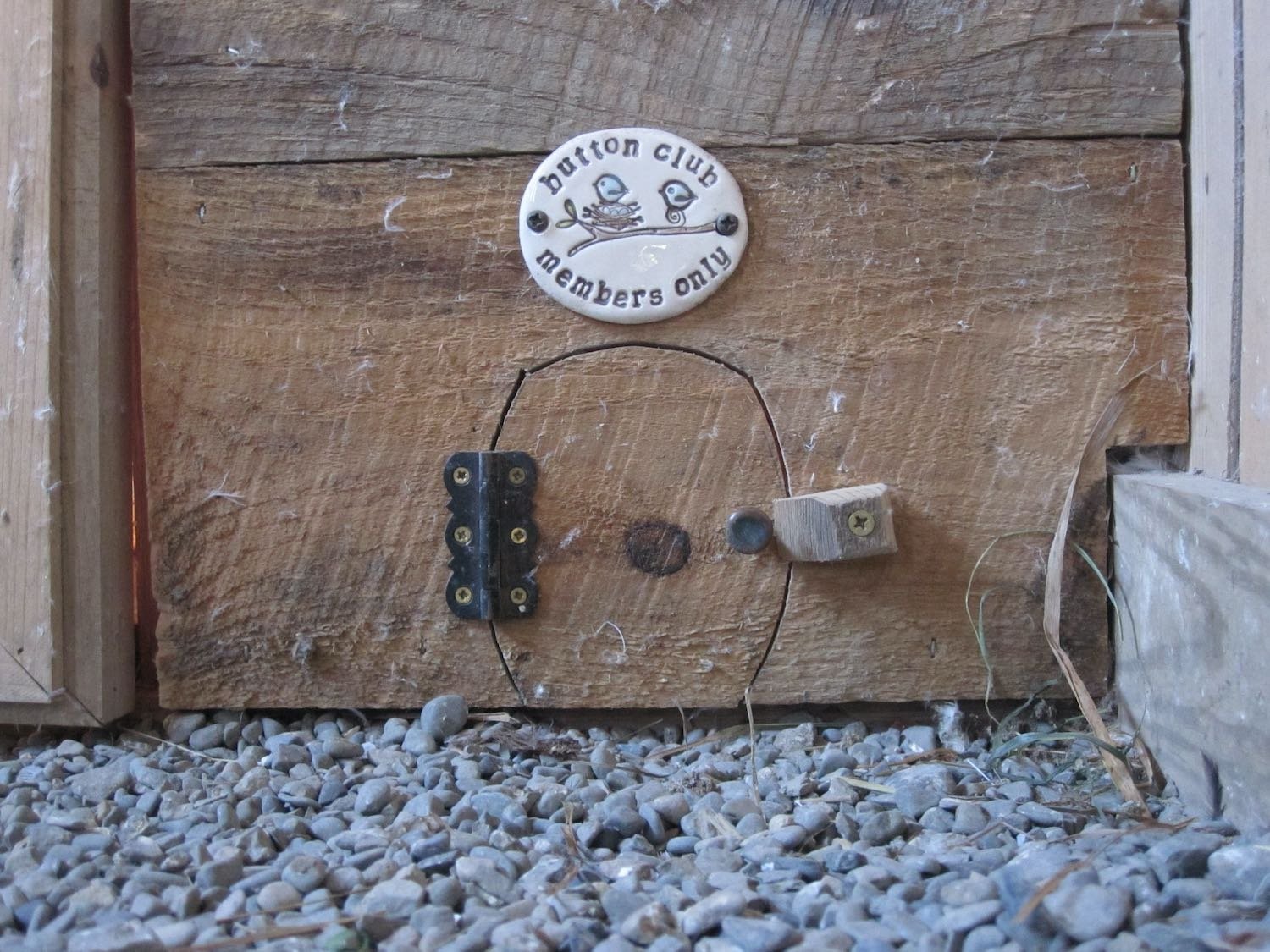
Entrance to their winter heated cabana.
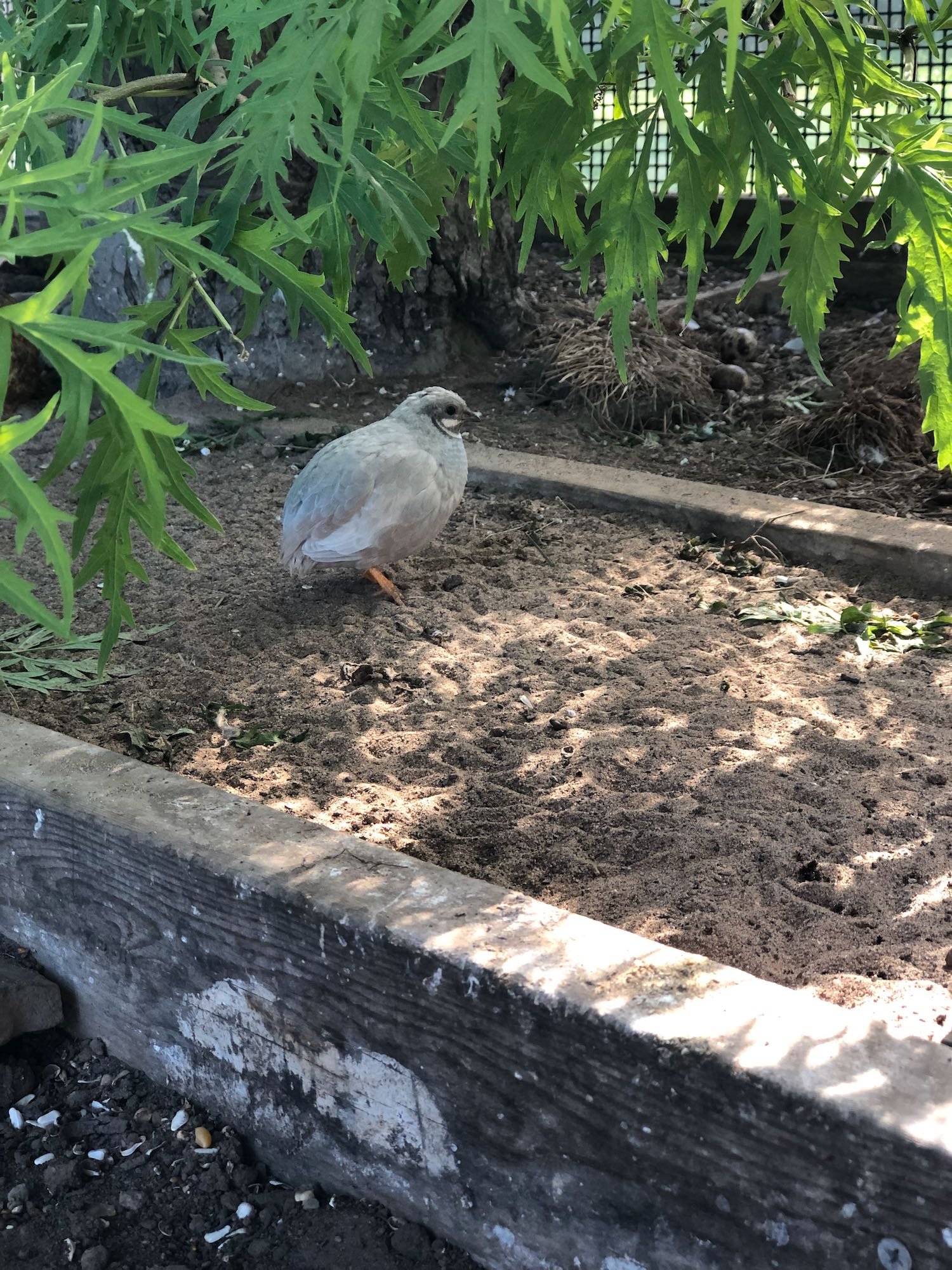
Ricky in the sandbox.
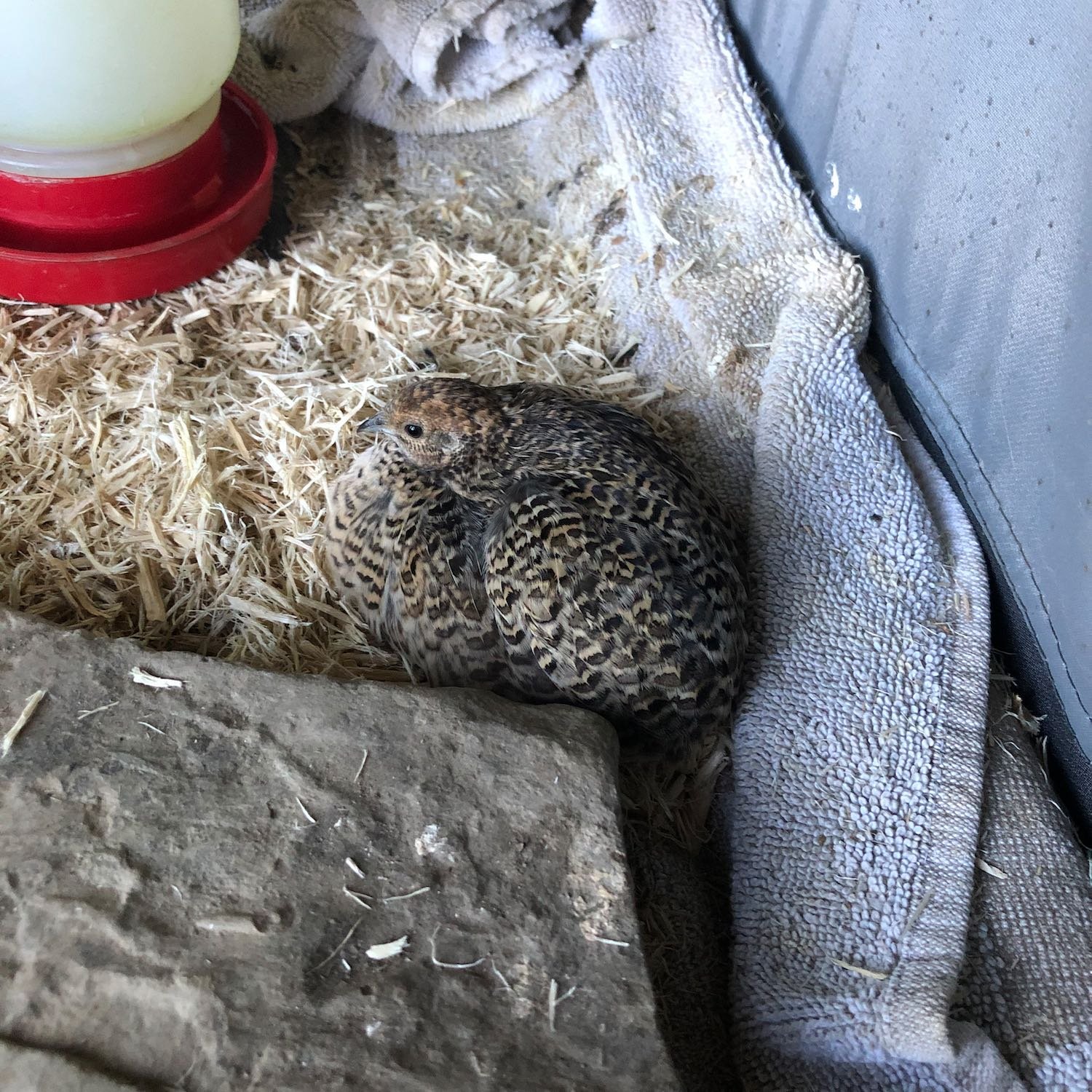
Charlotte sitting on a nest inside their heated cabana.
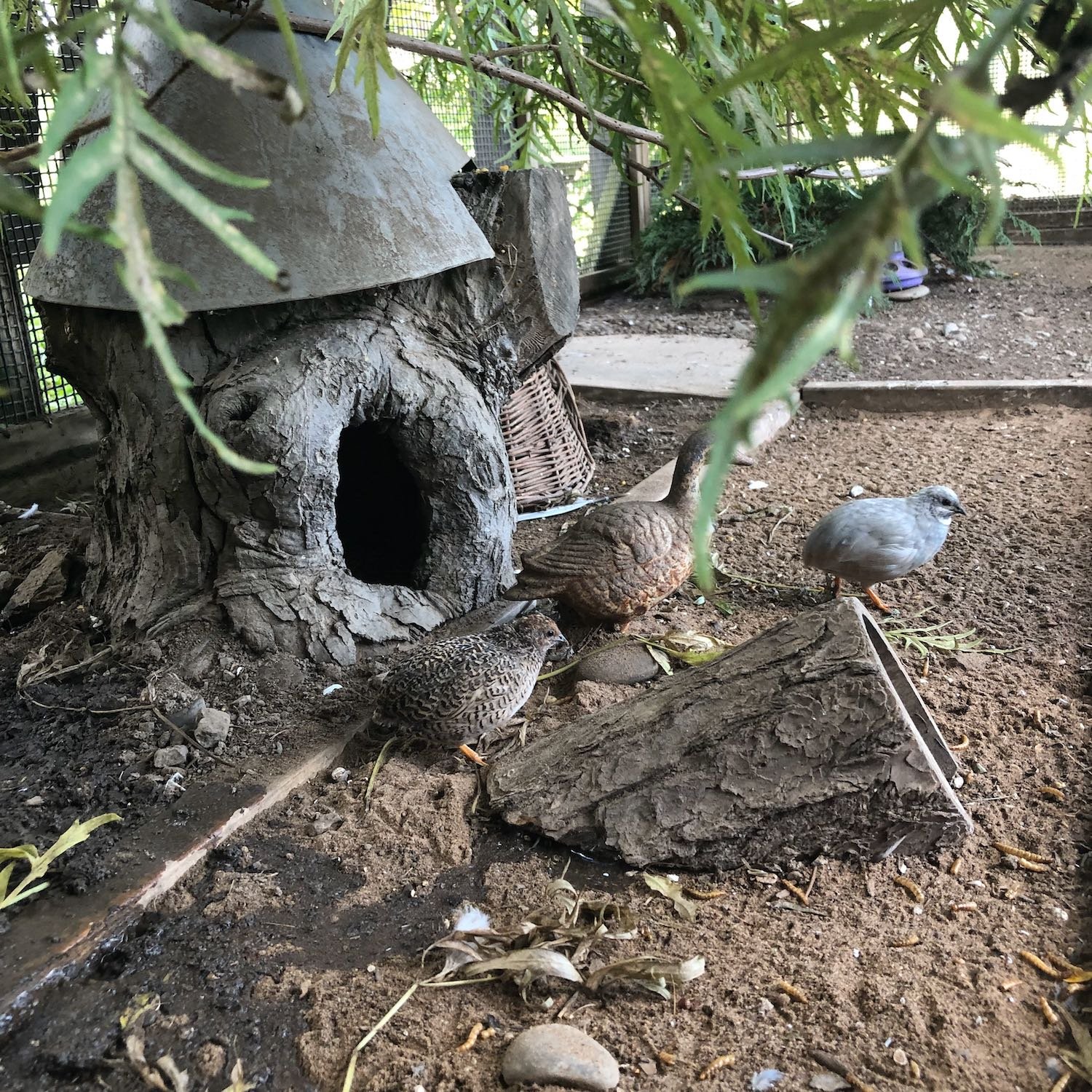
Charlotte and Ricky.

Ricky and Mia..
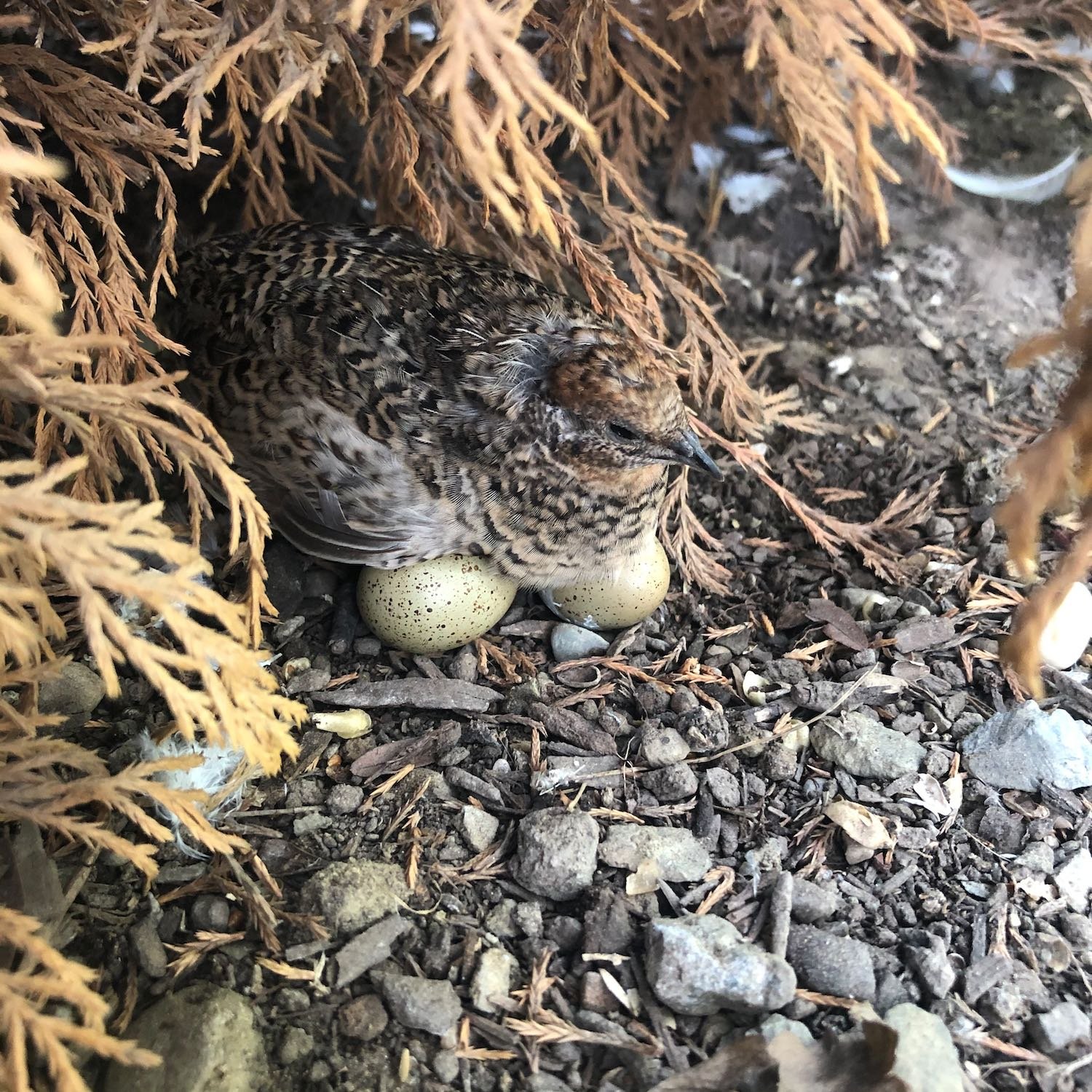
Charlotte sitting on her clutch of tiny beautiful eggs. We didn't allow any eggs to hatch.

